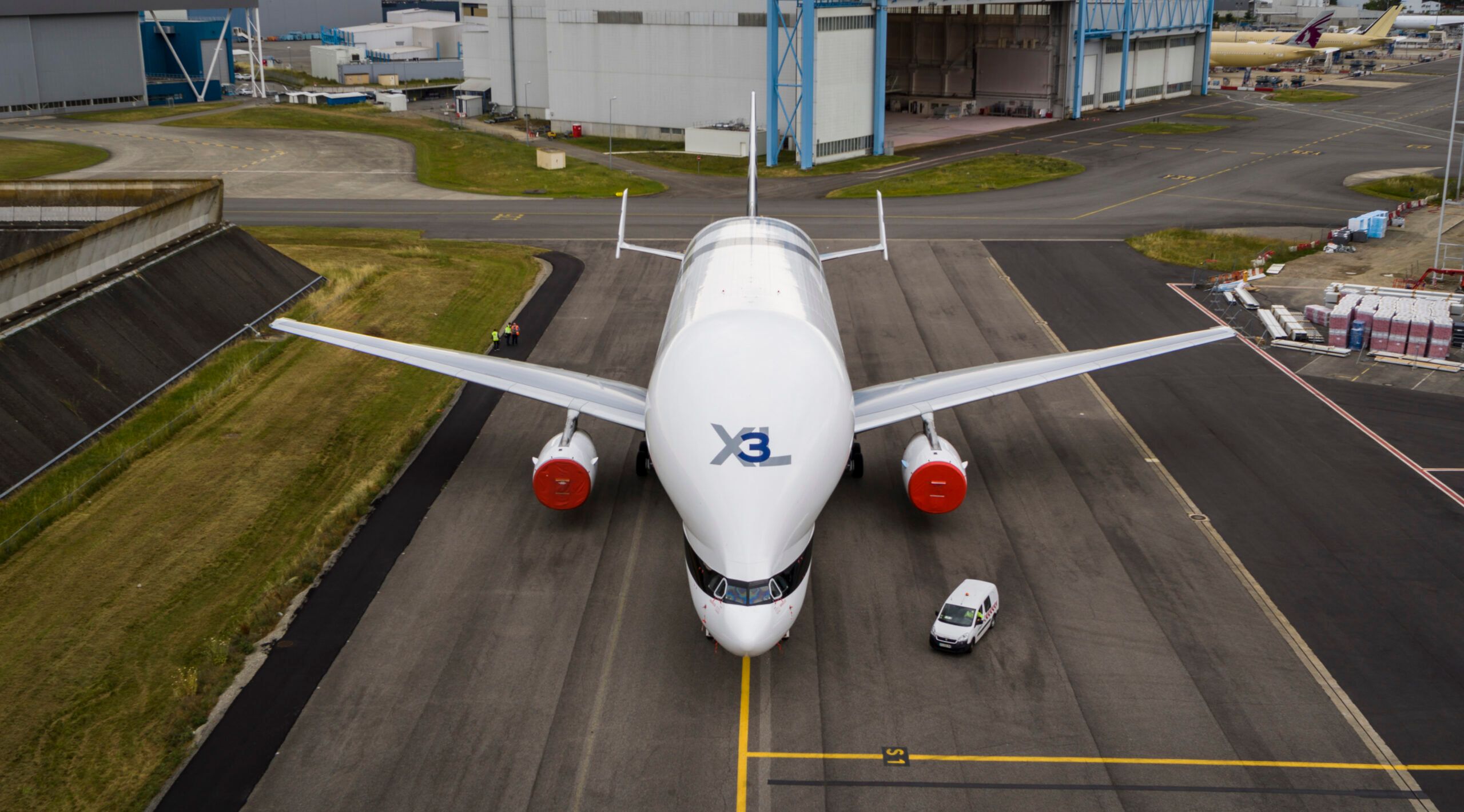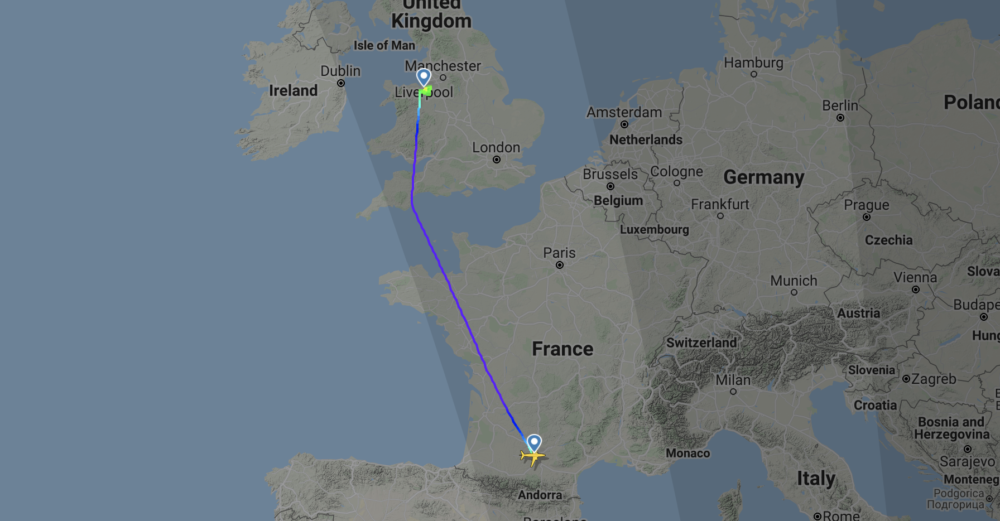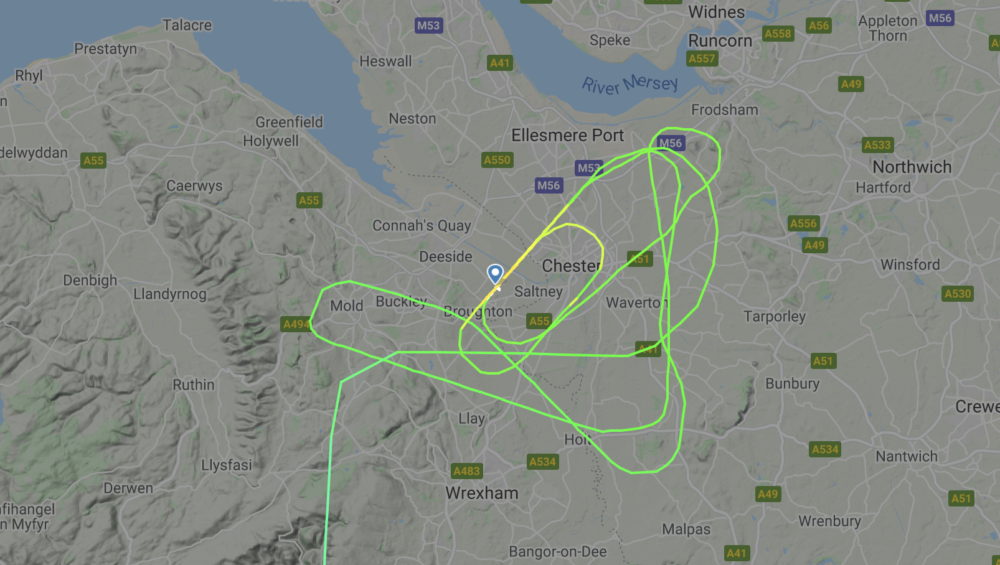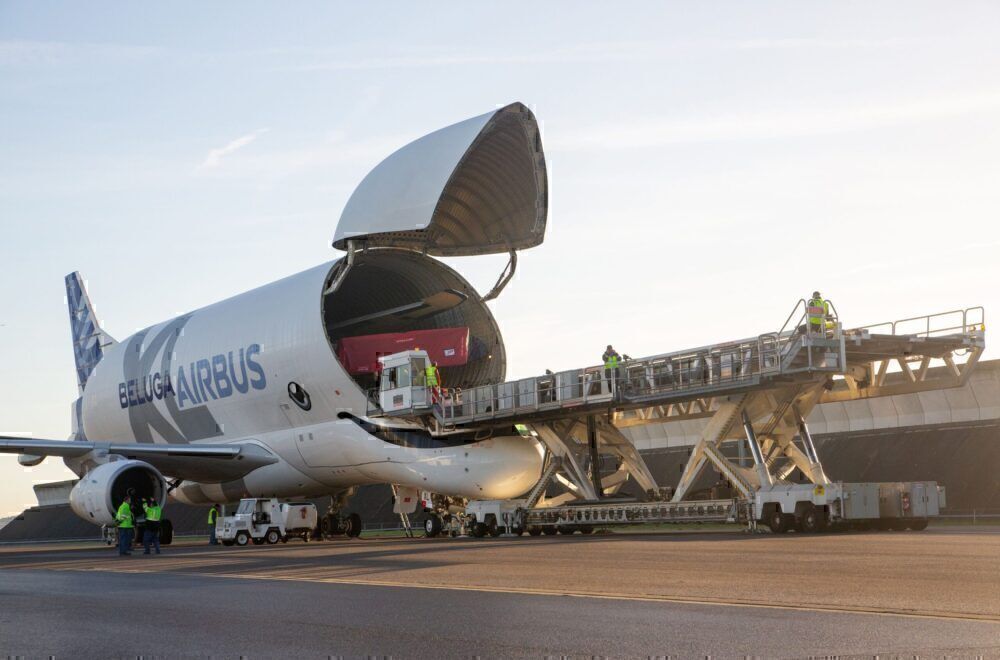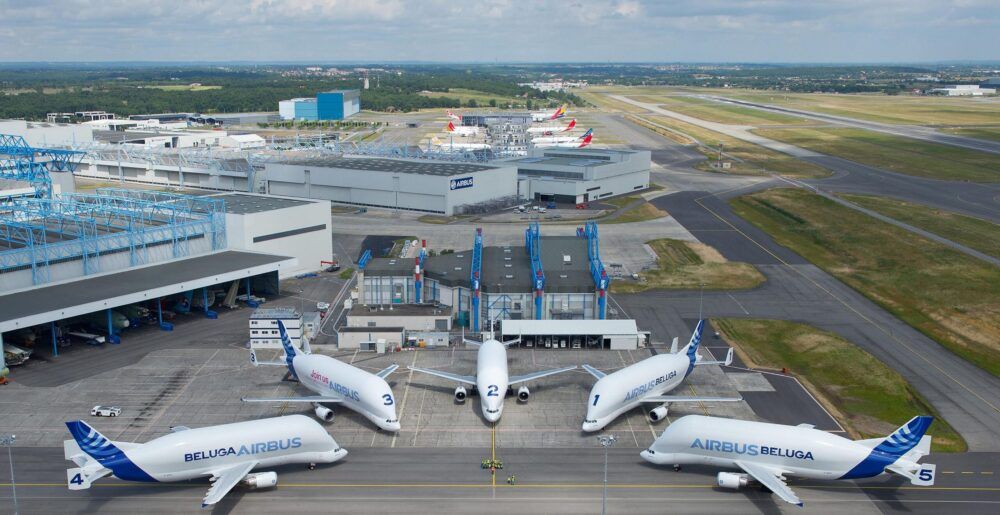Airbus has today introduced its third Beluga XL aircraft to its fleet. The shiny new bulb headed giant flew from Airbus’ plant in Toulouse to Chester Hawarden Airport, home of its Broughton plant, where wings for most of its products are produced. It’s the third of six Beluga XLs that will be introduced to the Airbus fleet by 2023.
The XL3 arrives in the UK
Registered F-GXLI, the third Beluga flew from Toulouse to Chester in the North West of England. Taking off at 11:04 this morning, it flew for two hours and 34 minutes before landing at 12:39 local at Chester Hawarden Airport (CEG).
The XL apparently had some windy conditions to deal with, as it made a couple of low passes before setting off for a bit of a detour around the area for a few minutes. On the third approach, she landed safely, completing the first revenue flight of this third Beluga XL.
Despite being just four miles southwest of the city of Chester, Hawarden Airport is actually in Flintshire, Wales. It is home to Airbus UK’s Broughton site, where Airbus produces wings for all models of aircraft, with the exception of the A220.
It has a long and colorful history in aviation, from being a shadow factory in World War II for Vickers Armstrongs Limited, producing Avro Lancasters and Vickers Wellingtons. After the war, de Havilland build a multitude of aircraft at the site, and in the ‘60s it became part of the Hawker Siddeley Aviation business.
Now, however, it is one of the main plants for Airbus in the UK, employing around 6,000 workers. F-GXLI, the third Beluga XL to join Airbus’ fleet, will be working hard transporting the output from the factory to final assembly lines for many years to come.
Stay informed: Sign up for our daily aviation news digest.
Where will it fly?
The Beluga XLs have a very niche routemap. As it is solely for transporting aircraft components between Airbus sites, it flies exclusively between production sites in Europe and its final assembly lines in Toulouse, France; Hamburg, Germany; and Tianjin, China. Recently, Airbus added Getafe in Spain to the network of these planes.
The aircraft is based on the A330 freighter. Its predecessor, the BelugaST, was a modified A300. At 63 meters long and 8 meters wide, the Beluga XL has a superior cargo carrying capacity compared with the original BelugaST, and can transport two complete Airbus A350 wings in one go. The ST could only take one at a time.
Airbus is slowly replacing its fleet of STs with the modern XL versions. In total, it will build six of these giant planes, with the aim to have all in operation by 2023. With three now in operation, Airbus is well on schedule to achieve this goal. But with only six slated to be produced, you’ll be a lucky spotter if you get to see one!

